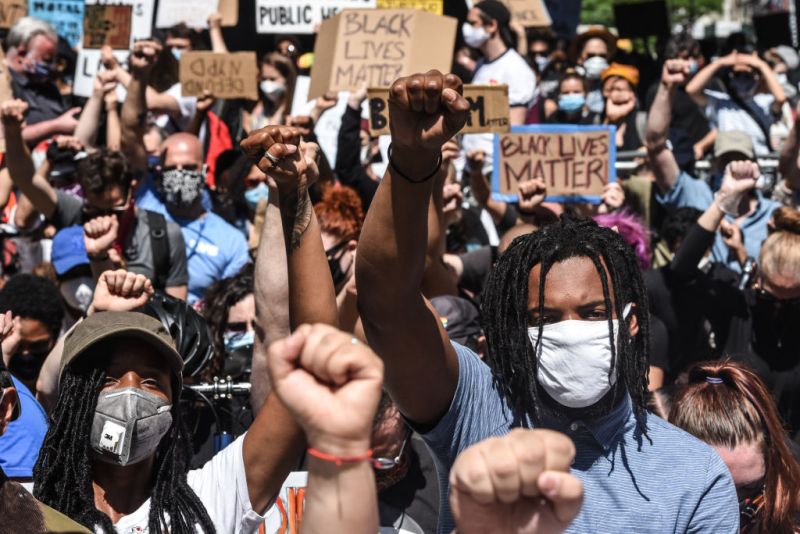COVID-19 has not been vanquished in the United States — in recent days, some states, including Arizona, North Carolina, and California have reported their highest numbers of cases to date. And yet, the U.S. Coronavirus task force is winding down and states are relaxing restrictions. Large crowds are in the streets protesting the death of George Floyd and the U.S.’s history of systemic racism against Black people. Although many protestors are wearing masks and trying to maintain distance, police protest response tactics, including kettling and the use of tear gas, can help the virus spread. What might this mean? As Robinson Meyer and Alexis C. Madrigal report at The Atlantic, it means that those fighting for justice are those that may end up suffering the most.
The protests have led to unusually agonized public-health communication. They have not been met with the stern admonition to stay home that has greeted earlier mass gatherings. Given the long-standing health inequities that black Americans have experienced, hundreds of public-health professionals signed a letter this week declining to oppose the protests “as risky for COVID-19 transmission”: “We support them as vital to the national public health and to the threatened health specifically of Black people in the United States,” they wrote. Yet the protests are indisputably risky, and officials at the Centers for Disease Control and Prevention have warned the gatherings might “seed” new outbreaks.
Americans have not fully grasped that we are not doing what countries that have returned to normal have done. Some countries have almost completely suppressed the virus. Others had large outbreaks, took intense measures, and have seen life return to normal. Americans, meanwhile, never stayed at home to the degree that most Europeans have, according to mobility data from Apple and Google. Our version of the spring lockdown looked more like Sweden’s looser approach than like the more substantial measures in Italy, or even the United Kingdom and France. Swedish public-health officials have acknowledged that this approach may not have been the best path forward.
People partying in a pool may live while those protesting police brutality may die. People who assiduously followed the rules of social distancing may get sick, while those who flouted them happily toast their friends in a crowded bar. There is no righteous logic here. There is no justice in who can breathe easy and who can’t breathe at all.
